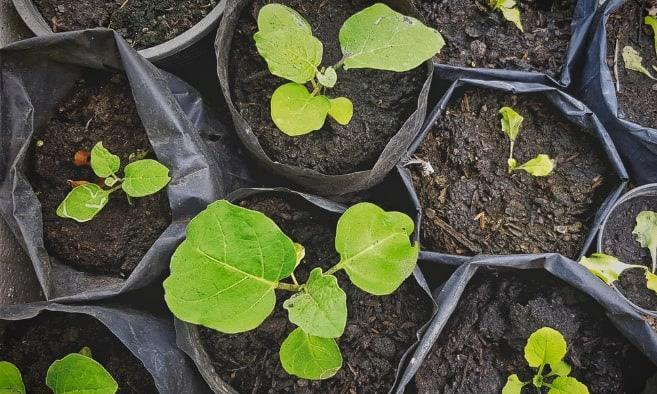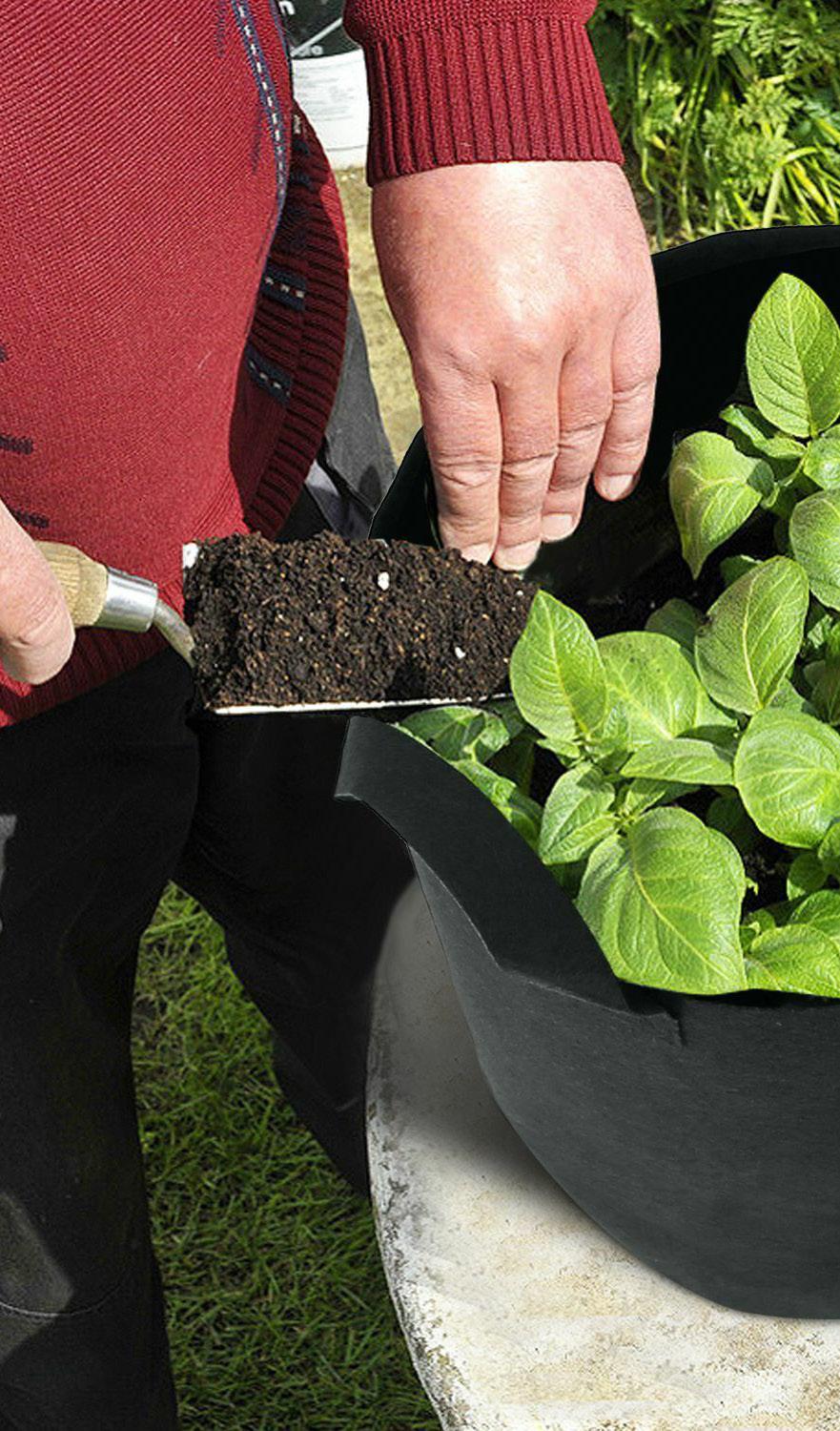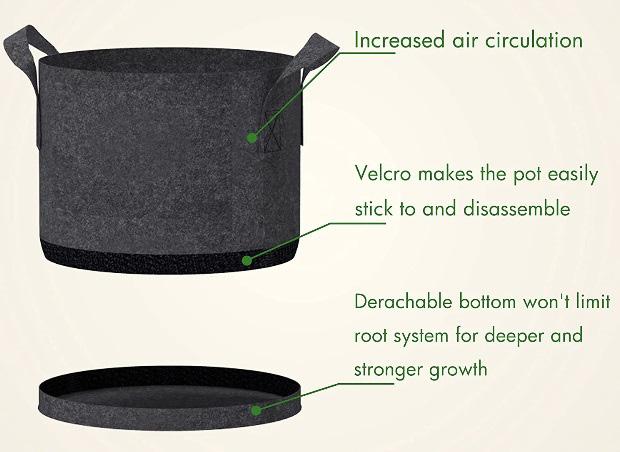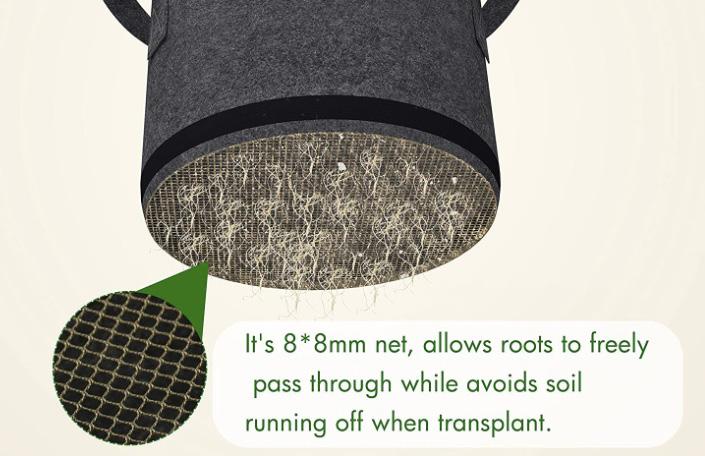
5 minute read
USING GROW BAGS FOR YOUR VEGETABLES
It’s the time of the year for getting seeds in the ground to start growing those veggies.
As many of you know, growing your own vegetables is a rewarding experience that can provide fresh, nutritious produce for you and your family. However, not everyone has access to a traditional garden space required for a full-scale garden.
Advertisement
Last year, I discovered a really simple and effective solution that allows growing vegetables in even the smallest of spaces.
What is that? Grow Bags!
Grow bags are a type of container gardening that allows you to grow plants in a flexible, lightweight bag. They are made from a variety of materials, such as fabric or plastic, and are available in a range of sizes to suit your specific needs.

The Many Applications Using Grow Bags
Grow bags are versatile and can be used in many settings, including balconies, rooftops, patios, and small yards. They are also ideal for those who are renting and cannot make permanent changes to their outdoor space.
For me, I used them on the backyard deck in conjunction with our traditional garden. This year I am ramping it up, and will be placing them all over the yard, as well as our deck and possibly the front yard area.
This is why I like grow bags because they can be moved around easily, allowing the advantage of using different areas of sunlight or providing protection from harsh weather conditions. This flexibility is especially important for gardeners who live in regions with unpredictable weather patterns or sunny/shady areas.
For example, we have one area where there is a lot sun part of the day and shade for the rest. This year I am looking to grow wine cap mushrooms in these areas, but I need to figure out the best place and see where they will become prolific. So using a grow bag that I am able to move around allows me to find the perfect spot.
As a side note, growing wine cap mushrooms has a number of benefits, including being easy to grow, nutritious value, sustainability, and versatility in cooking. If you plant them in your garden or raised beds, they will help boost your soil’s health. With a little bit of effort, anyone can grow their own wine cap mushrooms and reap the many benefits they provide…AND did I mention how good they taste?
For those who are interested, this is the mycelium that I use.
Layering The Dirt With Compost
One of the keys to success with grow bags is ensuring that you have a healthy growing medium. A mixture of potting soil and compost is a good choice for growing vegetables in grow bags. You should aim for a ratio of approximately
70% potting soil and 30% compost.
Layering the soil in the grow bag can help promote better drainage and root growth.
Gravel or rocks in the bottom of the bag will allow excess water to drain away from the roots. Next, add a layer leaves and small, finely broken up twigs. If you do not have leaves and such, a compost mixture will do. Then fill the grow bag with your gardening soil, making sure to leave enough room for your plants.
By layering this way, you are not using up all of your gardening soil and are also creating a positive growing environment that will feed your vegetables for the season; the leaves and such will break down.
TIP: We have a worm bin, so I add about 15 – 20 worms to each bag. This helps enrich the soil and the worms love it, too. They help break down the compost matter even more, thus feeding your plants from the compost and their castings, which will drop as they chow down.
The Best Vegetables To Grow In Grow Bags
Grow bags are viable for a wide range of vegetables, but some varieties are particularly well-suited for this method.

Among the vegetables I will be growing in the bags this year:

Tomatoes - Tomatoes are a popular choice for container gardening, and for good reason. They are easy to grow, produce large yields, and are packed with nutrients.
Peppers - Peppers are another great option for grow bags. They come in a range of colors and varieties and can be grown from seeds or seedlings.
Lettuce - Lettuce is a fast-growing vegetable that is perfect for small-space gardening. It can be grown from seed or seedlings and can be harvested multiple times throughout the growing season.
NOTE: Plant a few seeds, then wait a week and plant more. Wait again, then plant more. This is called succession planting, and by doing this you will have lettuce for the entire season. Just keep harvesting and planting every week or so.
Radishes - Radishes are a fast-growing root vegetable that can be grown in shallow containers. They are easy to grow from seed and can be harvested in as little as three to four weeks.
Garlic - Garlic is a great plant for grow bags. You can “crowd” the garlic a little closer to each other (versus onions) and get about 15 – 20 garlic heads per five-gallon grow bag. The bigger the bag, the more garlic you can plant.
Herbs - Herbs such as basil, thyme, and parsley are perfect for grow bags. They require minimal space and can be used fresh in a variety of recipes.
Mint - I mention this in its own category because mint will take over a garden in just a few years. So you want to keep mint corralled so that it doesn’t spread.
In the end, just about anything you can grow in the ground, you can grow in grow bags. The key is getting the right size bag for the veggies you wish to grow.
Other Benefits Of Using Grow Bags
In addition to their versatility and ease of use, grow bags offer a number of other benefits for vegetable gardening.
Here are just a few…
Improved Drainage - Grow bags offer better drainage than traditional garden plots, which can be especially important in regions with heavy rainfall.
Reduced Weeding - Because grow bags are a contained space, there is less surface area for weeds to grow. This means less time spent weeding and more time enjoying your garden.
Fewer Soil-Borne Diseases - Soil-borne diseases can be a problem in traditional gardens, but grow bags offer a more controlled environment that can help reduce the risk of disease.
Better Airflow - Grow bags provide better airflow to plant roots, which can help promote healthier growth and reduce the risk of root rot.


Conclusion
Whether you have limited space or just want to try something new, grow bags are an excellent option. You can put them just about anywhere and have an instant garden.
The brand I use is called GARDZEN and they are great. These bags are made of high quality and durable non-woven fabric, which is fluffy and has a good hand feel. The material is BPA- and AZO-free. These grow bags are washable, and you can reuse them over several seasons.
A final added plus is that they are easy to move around, the handles are double thick and double stitched to the bag.
The Gardzen grow bag sizes that I am using this year are: 20 Pack 5 Gallon, 10 Pack 7 Gallon, and 6 Pack 15 Gallon.
I hope that this has been helpful and motivated you to give grow bags a try!
Raymond Mohr, known as “The Kilted Prepper” in the preparedness community, writes on many related subjects and has many “how-to” videos on his YouTube Channel.
raymondmhor










